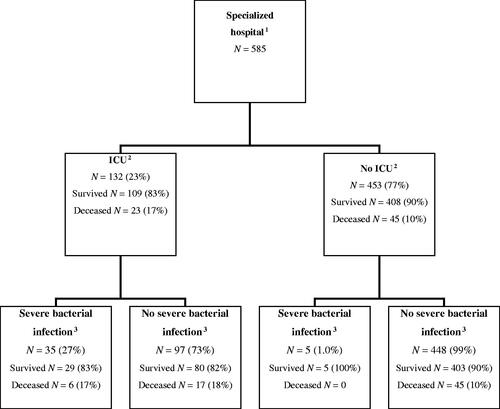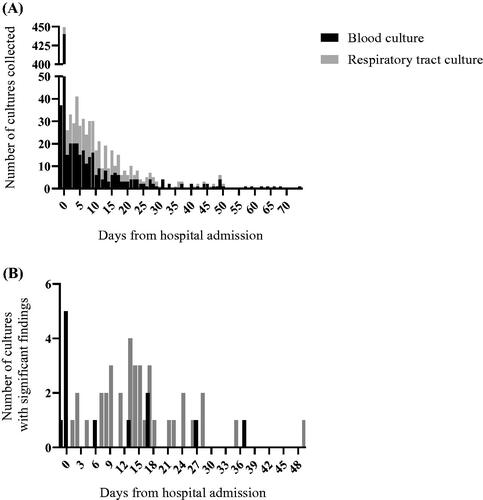Figures & data
Figure 1. Flow chart for distribution of intensive care unit (ICU) treatment need and severe bacterial infections among hospitalised COVID-19 patients during the first wave of the COVID-19 pandemic in the Capital Province of Finland.

Table 1. Patient demographics, risk behaviour and conditions of 585 patients with laboratory confirmed COVID-19 and treated in specialised healthcare hospital stratified according to the occurrence of severe bacterial infections (bacteremic or culture verified respiratory tract infections).
Table 2. Aetiology of severe bacterial infections: blood stream infections (BSI) and bacterial pneumonias.
Figure 2. Timing of microbiological sampling and significant blood culture and respiratory tract findings. Most samples were collected early during hospitalisation (A), but significant findings show an increasing trend towards longer hospitalisation (B). Significant findings reach a second peak at two weeks after hospital admission, while the first peak appears at the time of hospital admission when the majority of all blood cultures were collected. The X-axis in (A) and (B) shows time in days from hospital admission. aSpecialised hospital healthcare (including Helsinki University Hospital). bIntensive care unit treatment. cBlood culture positive infection and/or respiratory tract bacterial culture positive.

Table 3. Clinical management, complications and outcome of 585 patients with laboratory confirmed COVID-19 in specialised healthcare hospital and stratified according to occurrence of severe bacterial infection (bacteremic or culture verified respiratory tract infections).
Table 4. Multivariable analysis for risk factors of severe bacterial infections (bacteremic or culture verified respiratory tract infections) in patients with laboratory confirmed COVID-19 disease treated in specialised healthcare hospital and categorised according to the whole patient cohort (N = 585) (a) and intensive care unit (N = 132) (b).
